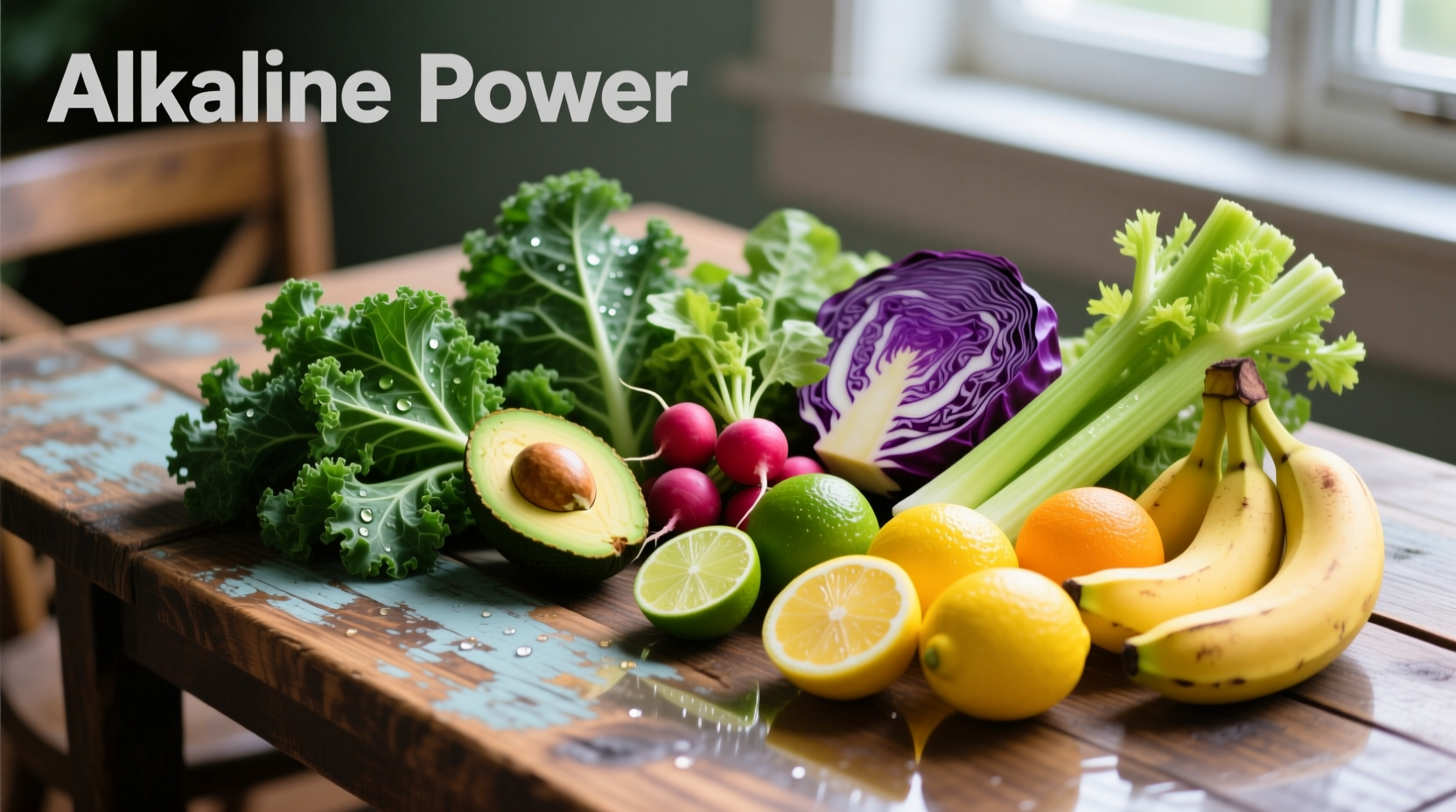Leafy greens, citrus fruits, most vegetables, almonds, and avocado are among the top alkaline-forming foods. Despite their initial acidity, lemons and limes actually create an alkaline environment in your body after digestion. This comprehensive guide details 40+ scientifically recognized alkaline foods with practical meal planning strategies.
Discover exactly which foods support your body's natural pH balance without falling for common diet myths. Our evidence-based list draws from nutritional science research and USDA food composition data, helping you make informed choices about incorporating alkaline-forming foods into your daily meals.
The Science Behind Alkaline-Forming Foods
When discussing "alkaline foods," we're referring to how foods affect your body's pH after digestion, not their actual pH value. The Potential Renal Acid Load (PRAL) score measures whether a food creates acid or alkaline ash in your system. Negative PRAL scores indicate alkaline-forming foods.
According to research published in the Journal of Environmental and Public Health, plant-based foods generally have negative PRAL scores, making them alkaline-forming. This explains why citrus fruits, despite tasting acidic, actually help maintain your body's optimal pH balance.
| Food Category | Alkaline-Forming Examples | PRAL Score Range |
|---|---|---|
| Leafy Greens | Spinach, kale, Swiss chard | -12 to -8.5 |
| Citrus Fruits | Lemons, limes, grapefruit | -2.5 to -2.0 |
| Root Vegetables | Beets, sweet potatoes, turnips | -4.0 to -2.8 |
| Nuts & Seeds | Almonds, chestnuts, pumpkin seeds | -2.3 to -0.5 |
Data sourced from the USDA Food Composition Database showing measured PRAL values for common foods.
Top 15 Alkaline Power Foods You Should Know
Based on comprehensive nutritional analysis, these foods consistently demonstrate strong alkalizing effects:
- Spinach - PRAL: -14.0, packed with magnesium and potassium
- Lemons - Despite pH 2.0-2.6, creates alkaline ash after metabolism
- Avocado - Healthy fats with PRAL of -15.6
- Broccoli - Contains sulforaphane with PRAL -6.1
- Cucumbers - 95% water with PRAL -2.7
- Almonds - Only nut with negative PRAL (-2.3)
- Watermelon - High water content with PRAL -3.3
- Garlic - Sulfur compounds with PRAL -2.2
- Celery - PRAL -5.2, excellent electrolyte source
- Carrots - Beta-carotene rich with PRAL -4.9

Practical Implementation Guide
Transitioning to more alkaline-forming foods doesn't require drastic diet changes. Start with these evidence-based strategies:
Morning Alkaline Boost
Begin your day with lemon water (1 lemon squeezed into 16oz warm water). Research from the Harvard T.H. Chan School of Public Health confirms this simple practice helps kickstart your body's natural alkalizing processes.
Smart Swaps for Common Meals
- Replace coffee with herbal teas (dandelion or nettle)
- Choose quinoa instead of white rice
- Substitute almond milk for dairy
- Use avocado instead of mayonnaise
Important Context and Limitations
Understanding the alkaline diet requires recognizing important boundaries. Your kidneys and lungs naturally regulate blood pH between 7.35-7.45, regardless of diet. As noted by Mayo Clinic researchers, "no credible evidence shows that changing your diet significantly alters blood pH." The value of alkaline-forming foods lies in their nutrient density rather than pH manipulation.
The scientific consensus, summarized in a 2019 systematic review, indicates that while the alkaline diet hypothesis has limitations, the foods it promotes offer proven health benefits through their vitamin, mineral, and antioxidant content.
Debunking Common Alkaline Diet Myths
Let's clarify misconceptions with evidence-based facts:
- Myth: Alkaline diets can prevent or cure cancer
Fact: The American Institute for Cancer Research states there's no evidence supporting this claim - Myth: You need expensive pH test strips to monitor your body Fact: Urine pH varies naturally throughout the day and doesn't reflect blood pH
- Myth: All acidic-tasting foods are acid-forming Fact: Lemons and apple cider vinegar become alkaline after digestion
Your Alkaline Food Action Plan
Implement these practical steps starting today:
- Fill half your plate with non-starchy vegetables at each meal
- Include at least three different colors of produce daily
- Replace one processed snack with raw vegetables and hummus
- Drink one glass of lemon water upon waking
- Choose whole fruits over fruit juices
Remember that balance matters more than extremes. The Mediterranean diet, consistently ranked as one of the healthiest eating patterns by nutrition scientists, naturally incorporates many alkaline-forming foods without strict pH monitoring.
Do bananas count as alkaline foods?
Ripe bananas have a PRAL score of -5.5, making them alkaline-forming. However, unripe bananas are more acidic. The ripening process converts starches to sugars, changing their metabolic effect.
Can alkaline foods help with acid reflux?
While alkaline foods won't directly neutralize stomach acid, high-fiber alkaline foods like vegetables can improve digestion. Research in the World Journal of Gastroenterology suggests plant-based diets may reduce reflux symptoms by 50% compared to standard diets.
How quickly do alkaline foods affect your body?
The metabolic process happens within hours of digestion. However, significant changes in urine pH (which reflects recent food intake) typically become noticeable within 2-3 days of consistent dietary changes. Blood pH remains tightly regulated regardless of diet.
Are there any risks to eating too many alkaline foods?
Overemphasizing alkaline foods could lead to nutritional imbalances. Extremely restrictive versions of the diet might cause deficiencies in protein, healthy fats, or certain vitamins. A balanced approach focusing on whole plant foods without eliminating entire food groups is recommended by nutrition experts.











 浙公网安备
33010002000092号
浙公网安备
33010002000092号 浙B2-20120091-4
浙B2-20120091-4